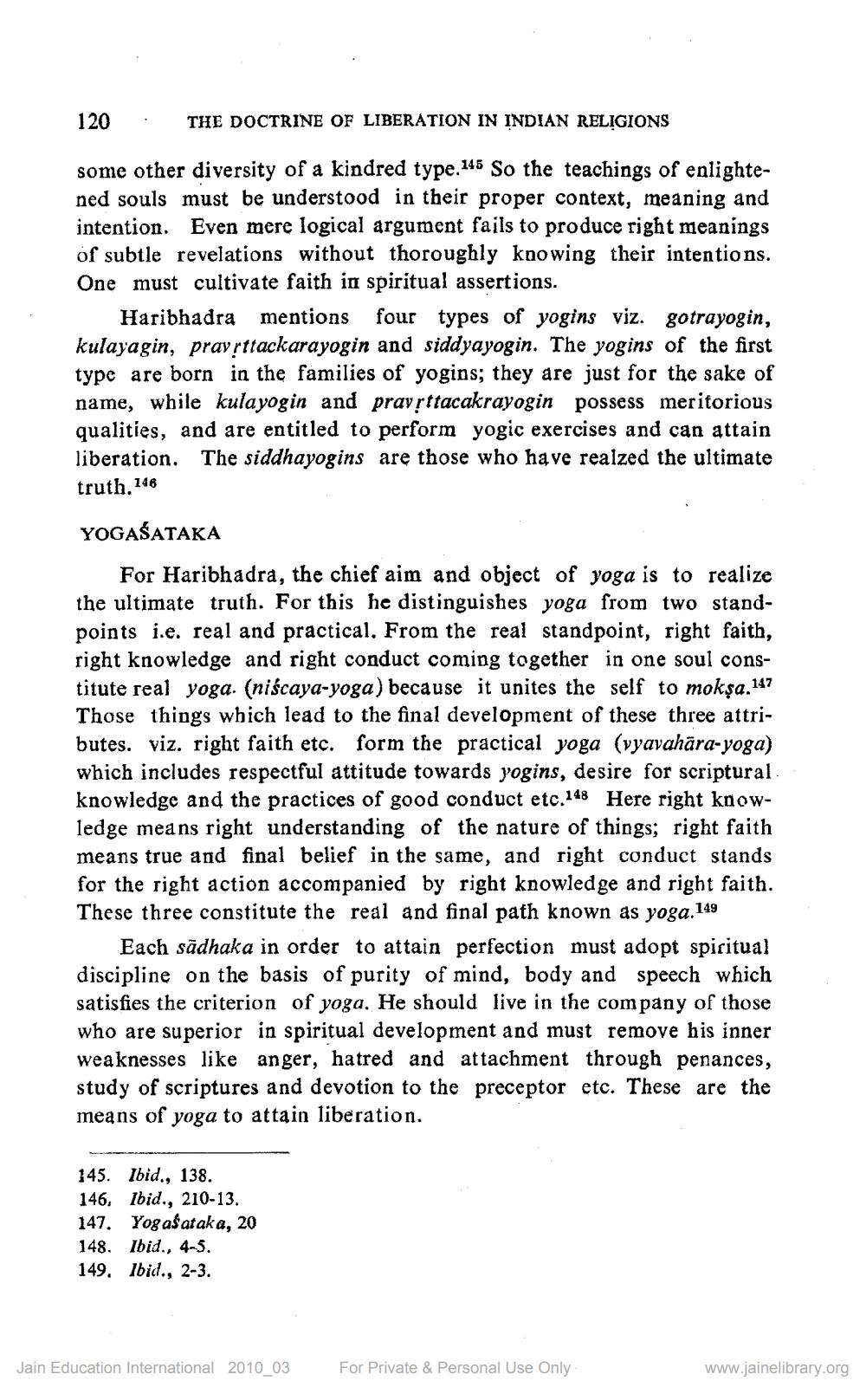________________
120
.
THE DOCTRINE OF LIBERATION IN INDIAN RELIGIONS
some other diversity of a kindred type. 145 So the teachings of enlightened souls must be understood in their proper context, meaning and intention. Even mere logical argument fails to produce right meanings of subtle revelations without thoroughly knowing their intentions. One must cultivate faith in spiritual assertions.
Haribhadra mentions four types of yogins viz. gotrayogin, kulayagin, pravrttackarayogin and siddyayogin. The yogins of the first type are born in the families of yogins; they are just for the sake of name, while kulayogin and pravsttacakrayogin possess meritorious qualities, and are entitled to perform yogic exercises and can attain liberation. The siddhayogins are those who have realzed the ultimate truth. 146
YOGAŚATAKA
For Haribhadra, the chief aim and object of yoga is to realize the ultimate truth. For this he distinguishes yoga from two standpoints i.e. real and practical. From the real standpoint, right faith, right knowledge and right conduct coming together in one soul constitute real yoga. (niscaya-yoga) because it unites the self to mokşa.147 Those things which lead to the final development of these three attributes. viz. right faith etc. form the practical yoga (vyavahāra-yoga) which includes respectful attitude towards yogins, desire for scriptural knowledge and the practices of good conduct etc.148 Here right knowledge means right understanding of the nature of things; right faith means true and final belief in the same, and right conduct stands for the right action accompanied by right knowledge and right faith. These three constitute the real and final path known as yoga.149
Each sādhaka in order to attain perfection must adopt spiritual discipline on the basis of purity of mind, body and speech which satisfies the criterion of yoga. He should live in the company of those who are superior in spiritual development and must remove his inner weaknesses like anger, hatred and attachment through penances, study of scriptures and devotion to the preceptor etc. These are the means of yoga to attain liberation.
145. Ibid., 138. 146. Ibid., 210-13. 147. Yogašataka, 20 148. Ibid., 4-5. 149, Ibid., 2-3.
Jain Education International 2010_03
For Private & Personal Use Only
www.jainelibrary.org




